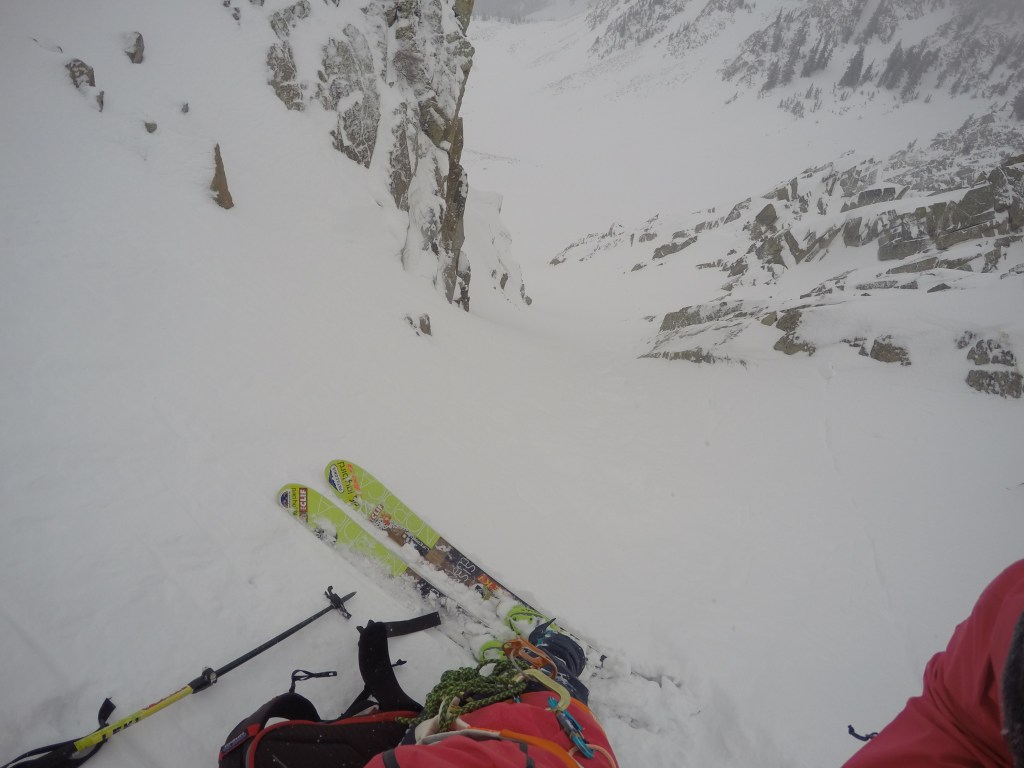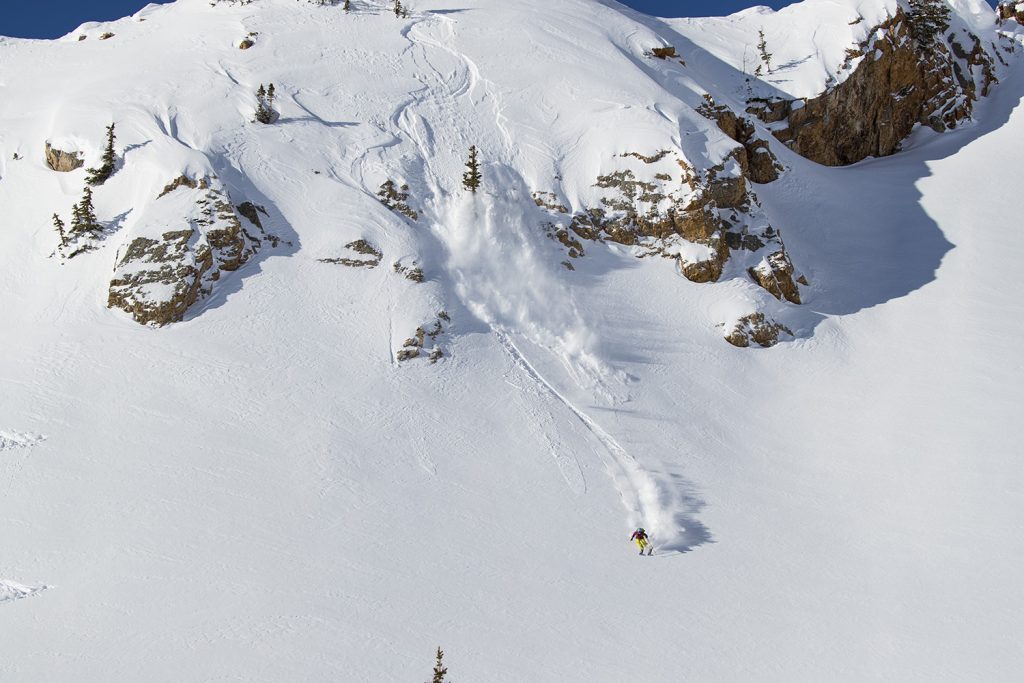When she set out to ski all 90 lines in Andrew McLean’s guidebook, The Chuting Gallery, Caroline Gleich was met with laughter. Based in Utah’s Wasatch Mountains, these steep ski lines are difficult and dangerous and at the time, only three people had been known to complete the set. In this age of hyperconnectivity, which voices do we choose to hear and which do we ignore?
We talked with Caroline about her new film, Follow Through, made in partnership with Duct Tape Then Beer and REI. Caroline opened up about dreaming big despite doubts.
AL: Your Chuting Gallery project took over a decade to complete. Take me back to 2004, the beginning; how did this start?
CG: A lot of backcountry skiers and splitboarders in the Wasatch have a copy of The Chuting Gallery; it’s common on coffee tables in Utah. I first picked it up when I was 16, while at a friend’s house. I had just moved to Utah, and my half-brother, Martin, had recently been killed in an avalanche on one of the lines in the book. It made me a little sick to my stomach. The rest of it sparked my curiosity. There are all these major couloirs you drive by when going to the ski resorts, and now I had a reference to their names and routes to get to them. Some of the lines are actually in-bounds at local ski resorts so I probably skied the first few almost unintentionally.
AL: What was your process for transitioning from resort to backcountry skiing?
CG: It was a slow process for me. Some backcountry skiers are a little naïve when they start. I started my career from the opposite side. I had just lost my half-sibling and I saw the pain my family went through. I was fully aware of the risks. Any time I would leave the resort boundary or go into the backcountry, I had the mental image of my half-brother at his funeral. I just thought, “I can’t do that to my family, I have to come home in one piece.” It’s a different place to start from than for most people.
AL: How did you continually put yourself through that?
CG: I spent a lot of time understanding snowpack before I decided this was a project I could undertake. There were 15 years between when I moved to Utah and when I skied the line where Martin was killed. 15 years of practice, snow, education, learning and tiptoeing around.
AL: In April 2017, five years after you started, you finished the last line. How did it feel?
CG: The last line was really scary and hard. It was way worse than I thought it would be.
AL: Did you intentionally leave Ciochetti’s Ribbon for last?
CG: There are some in the book that you just don’t want to ski until you have to. It gets down to the wire and you have these nasty ones left that are absolutely terrifying. And it wasn’t my best day of skiing. So there was a little disappointment I didn’t end on a higher note. But on the other hand, the fact that it was challenging and wasn’t a gimmie—it makes the success a little sweeter. If it had been a casual day, I wouldn’t have felt I earned it in the same way. It was incredible to have that feeling. There’s something about having that connection to your local mountains. To know the intimate details and have a relationship there. That part is really gratifying. I travel through these mountains year-round. I trail run there too, so to be able to look up at them and remember skiing there, I feel a big sense of pride.

Caroline prepares to drop into Wolverine Cirque, one of the lines in The Chuting Gallery. Photo Credit: Caroline Gleich
AL: Aside from managing the physical challenges of ski mountaineering, the film shows some emotional challenges you’ve faced as well. From self-doubt and online harassment, how have you learned to deal with these voices?
CG: When I first starting getting negative comments online, I wanted to delete them as quickly as possible. But instead, I think it’s better to address them and own them. The turnaround happened when I shared the comments I was receiving in a Facebook post. I went from a place where they were a shameful hidden thing that I was trying to escape to something that was out in the public sphere. It’s easy to want to ignore it, and move on, but by doing the opposite it puts you in a more powerful position.
AL: Has that harassment changed how or what you share online?
CG: Not that I wasn’t honest before, but I’ve become more honest and transparent. In the early years, I focused more on the joy of it all. Now, I’m more willing to talk about the things that are less fun to talk about. I’m more willing to be more vulnerable. I want to share the truth. By being more vulnerable you can have more connection to people.
AL: And despite some negativity, you’d rather connect more, not less.
CG: Yeah. This film is the most vulnerable and truthful thing I’ve ever put out there. It’s terrifying to expose yourself. But I think there’s a lot of value in sharing your truth and sharing your story.
AL: What do you hope people take away from your story and this film?
CG: Ski mountaineering is really dangerous, so I don’t necessarily want to inspire that without acknowledging the risk. But I’d like people to try an project—in the mountains, at work, at home or wherever. I hope this film inspires people to do that thing they’ve always wanted to do and to tackle a big, ambitious goal. It doesn’t have to be in the mountains. For some people, it could be visiting a museum, or running a 5K or a marathon. It’s about actually doing it.
I hope this film inspires people to do that thing they’ve always wanted to do and to tackle a big, ambitious goal.
AL: Five years is a long time to work on a project. Will you miss it?
CG: I’m going to miss it so much. Every day it was easy to pick a route. just go back to the book and see what I hadn’t done yet. I will miss it, but on the other hand there’s always something new and inspiring to find. I’m sure I’ll find another really cool project.

Caroline exits the Shield Chute. Photo Credit: Adam Clark
Editor’s note: This interview has been edited for length and clarity.